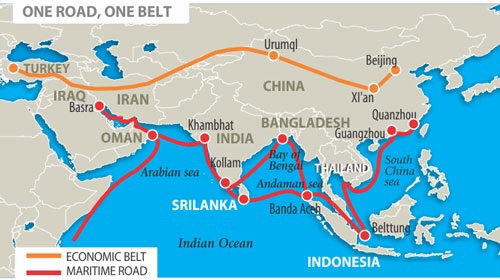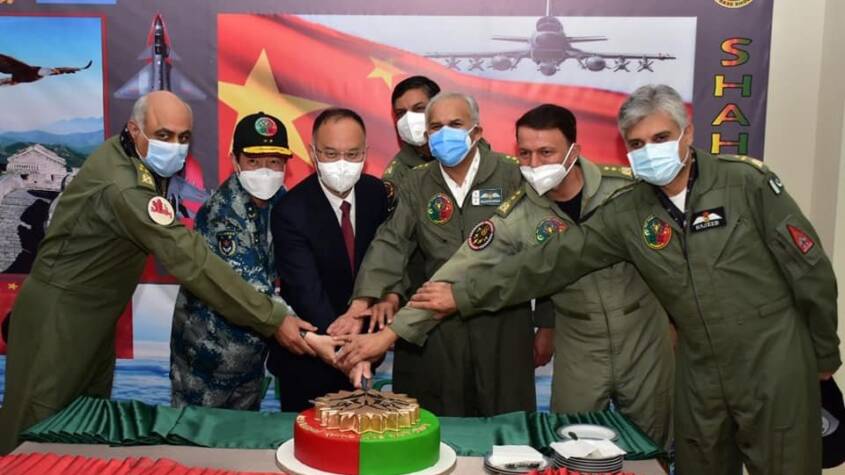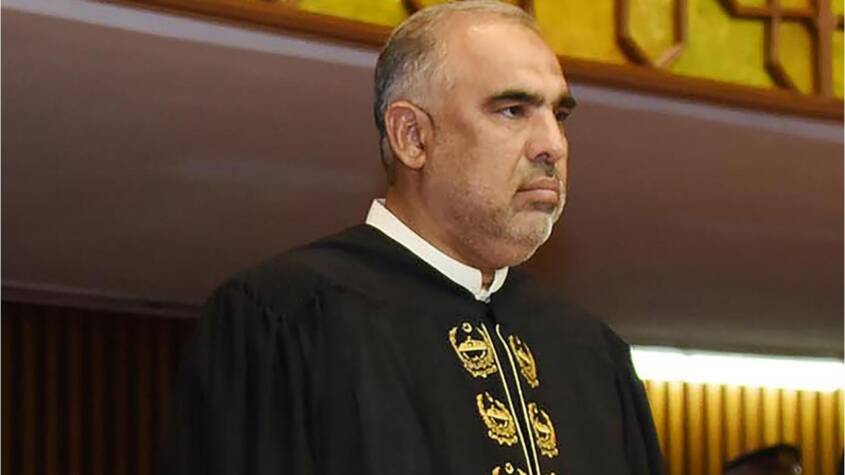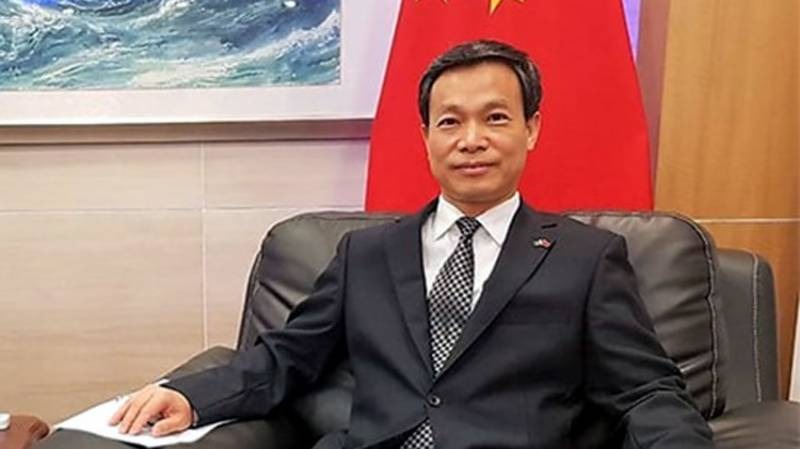CHINA IN THE INDIAN OCEAN – AN ESSENTIAL FOR STRATEGIC BALANCE
The Indian Ocean has been a focus of attention of seafarers for ages for both strategic dominance as well as economic interests.
This Ocean connects the economies of ASEAN, China, South Korea, Japan and Australia with Europe, the Americas, Asia and Africa.
World economies are dependent on oil and gas, which are abundantly available in the Middle East and exported to all corners of the world through Indian Ocean maritime routes.
Around 100,000 ships annually pass through five major choke points of the Indian Ocean.
Similarly, more than 70% of world oil trade passes through the Indian Ocean choke points, i.e. 40 % passing through the Strait of Hormuz,35-40 % through Malacca Strait and 8-9% through the Bab el Mandab.
China, the leading global economic power, is also critically dependent on the energy resources, imported from the Persian Gulf, passing through Malacca Straits.
Moreover, at present all major maritime trade routes of China, connecting with global markets pass through the Indian Ocean, making her vulnerable in the maritime arena.
The Indian Ocean also houses all nuclear powers except North Korea. Similarly, the USA, the dominant power of the world along with allies including India, wants to continue her dominance of the Indian Ocean.
China, emerging global power and challenger to the USA, also needs to defend and protect its legitimate maritime interests in the Indian Ocean.
China’s focus to build up its Navy, launch of BRI and maritime Silk Route concepts are real challenges to US interests.
India, a formidable power in the Indian Ocean also sees China as a threat to its dominance in her areas of interests.
President Biden of the USA has already shown his cards to address the Chinese influence at the global level. During the recent G-7 meeting, held in the UK, battle lines have been drawn.
The USA and its allies (including India, Australia, South Africa and South Korea) are on one side, whereas China leads the other group, comprising Russia, Iran and other like-minded states including Pakistan.
The maritime sector of the Indian Ocean faces both traditional and non-traditional threats which no nation can single-handedly manage in the 21st century.
It is because of the same that weak states hop on the bandwagon with powerful states and powerful states opt for collations. On the other hand, powerful states also need bases for guarding both military and economic interests on land and sea.
In old times, ships using coal used to visit friendly ports to embark coal, water and fresh rations.
Navies of these countries used to protect the ports as well as sea routes against all possible threats.
A similar phenomenon is back in the 21st century, where both the USA and China are trying to win states to act as “Coal Station” for the stationing of their maritime assets.
The USA has inked formal arrangements for the provision of logistics with India, Oman and Australia, in addition, to already established bases in the Indian Ocean.
China has also established her first naval base in Djibouti, whereas, established formal links with Oman for the provision of logistics to its Navy.
In addition, China also has management rights of Gwadar (Pakistan) and Hambantota (Sri Lanka).
China has also assisted Myanmar in making oil & gas pipelines (793 km), originating from Ramree Island of Myanmar which terminates at Ruili in Yunnan province of China.
These pipelines will carry around 8% of Chinese oil and gas requirements, bypassing Malacca.
China is also building CPEC, which has connected Gwadar Port in the North Arabian Sea with Western China. It is also intended to lay oil and gas pipelines adjacent to road/ railway networks. Academic circles argue that China is addressing its Malacca dilemma.
Although one cannot create a dilemma for great powers definitely, CPEC and Myanmar pipelines will ease a lot of Chinese worries. There is another possible development of CPEC into Indian Ocean.
China will develop a maritime bridge between the Arabian Peninsula (through Duqm Port of Oman) and Gwadar.
Similarly, another maritime bridge is likely between Gwadar and Djibouti to connect the African continent with China through Pakistan.
Chinese Navy is a potent force to reckon with in her home theatres as of today. However, China lacks experience in operating navy away from home waters and managing to sustain sea control for an extended area for long periods.
China is also inferior in the number game of quality vessels including aircraft carriers, nuclear submarines and supporting flotilla to match US-led naval challenge in the Indian Ocean.
In the South China Sea, China has addressed this vulnerability through the construction of Forward Operating Bases (FoBs) on available islands strips in her control.
But, in the Indian Ocean, China opted a different approach i.e. “Winning hearts and minds” of the local populace through economic assistance.
Her focus is to build economic relations with IOR littorals. She is now a major trading partner with all IOR states including India.
This automatically necessitates the presence of a strong Chinese Navy in the Indian Ocean.
We know that the US Navy was established to protect US trade passing through the Mediterranean against pirate threats.
According to Lincoln Paine’s book, “The Sea and Civilization”, formidable naval force is mandatory. There is a complex interdependence between navy and commercial things.
This is the major and undeniably distinctive feature of the economic development of the state, in which the maritime sector acts as a major contributor.
Professor Robert Rubel, Dean at US Naval War College, opined, “The basic purpose of navies today is to protect the global economic system, where their contribution is crucial”.
China is also developing her naval muscles to address her vulnerability. However, China is not interested in developing both Gwadar and Hambantota Ports as naval bases. Local Governments will continue to provide security cover to respective ports. I
t will be a critical blunder by China, Pakistan or Sri Lanka to convert or establish a military base in these ports. This will certainly compromise the economic prospects of these ports forever.
China is a formidable power to be reckoned with by all accounts and, therefore, has a role to play as a balancing force in the Indian Ocean.
China is the only state with wherewithal to challenge the hegemonic attitude of the USA at global level. China, therefore, needs to expedite the development of its maritime powers.
This will provide adequate resources to China for ensuring strategic balance. This will also allow China to dominate areas of interests, where and when needed.
















